Scaling Your E-commerce Store with Affiliate Marketing Software: A Practical Guide
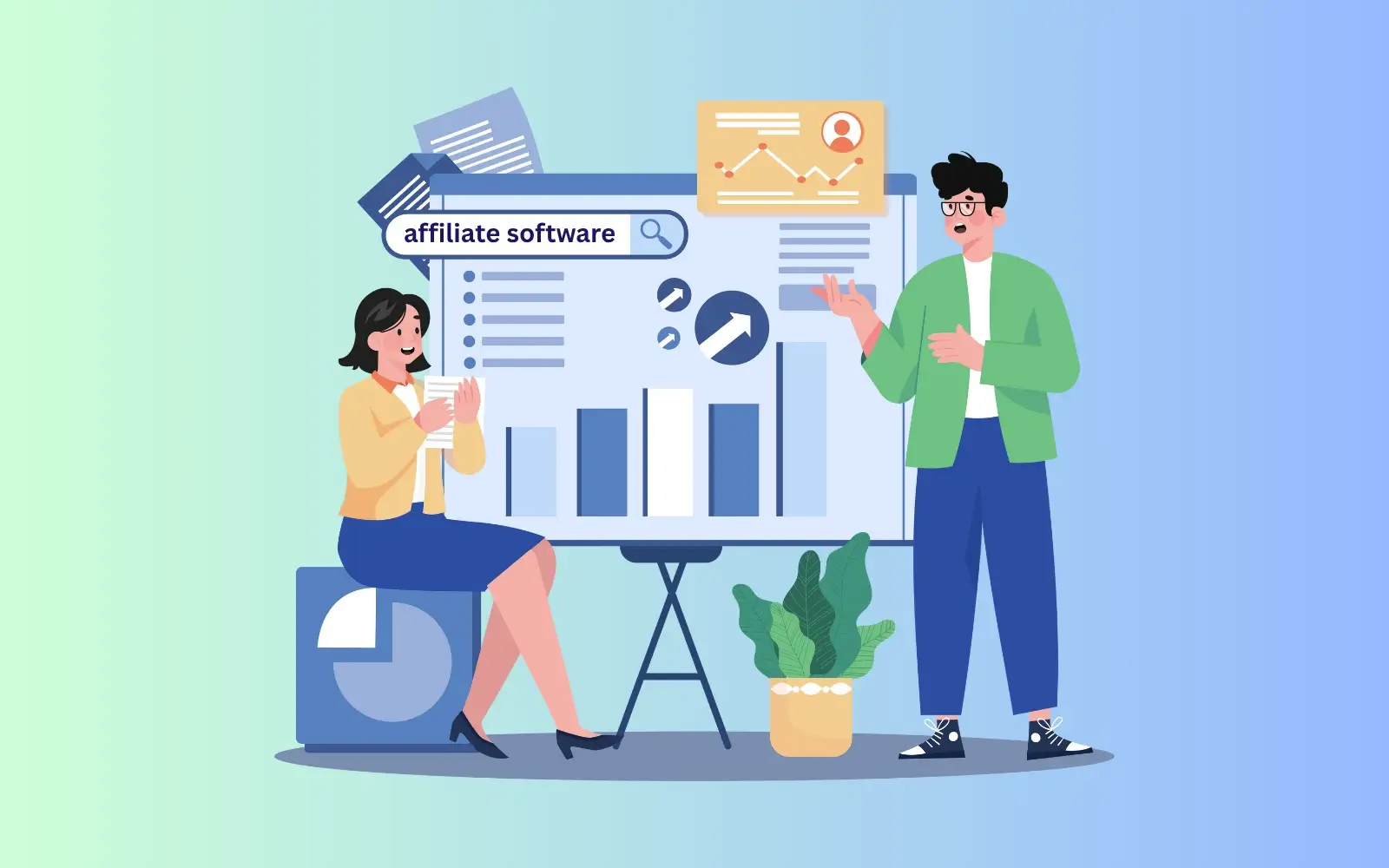
In this article
Why Manual Affiliate Management Fails at Scale
What Makes E-commerce Affiliate Programs Different
Use Affiliate Marketing Software to Automate the Repetitive Work
Choose the Right Affiliate Marketing Software Features for E-commerce
Recruit and Support Affiliates More Effectively
Track, Test, and Optimize Your Affiliate Program
E-commerce Brands Using Affiliate Marketing Software to Scale
Get Answers to Common Affiliate Software Questions
Wrapping up: Take the Next Step with Affiliate Marketing Software
You already know affiliate marketing can drive sales. And what you’re focused on now is: how do we scale this channel without compromising our team, tracking, or customer experience?
The answer lies in the tools you use. According to the DemandSage report, affiliate marketing drives 16% of all e-commerce sales in the U.S., and marketers rank it among their top three channels for ROI.
Thus, with the right tools and structure in place, you have all the chances to fully leverage the affiliate channel, increase your ROI, and drive more conversions.
This guide is for online store owners, marketers, and anyone juggling multiple hats, ready to take their affiliate program from a manual, reactive setup to a streamlined, scalable growth engine.
We’ll walk you through how affiliate software helps e-commerce brands grow faster, with fewer mistakes and more precise data.
Why Manual Affiliate Management Fails at Scale
Running an affiliate program with spreadsheets and goodwill only gets you so far. Tracking links disappear, affiliate payments get messy, and trying to figure out who drove which sale becomes a guessing game.
That’s why an affiliate marketing software has already become a must for online store owners.
Tools like Tapfiliate streamline the management of your affiliate program, providing a reliable and automated system to track, reward, and grow your business.
The result? A revenue stream that runs smoothly and scales reliably.
What Makes E-commerce Affiliate Programs Different
Affiliate marketing for online stores differs from affiliate marketing for SaaS or subscription services. The core concept, based on rewarding partners for driving conversions, is the same. However, in practice, it works differently.
E-commerce affiliate programs typically deal with:
- Higher transaction volume, lower price points. SaaS or subscription programs often deal with fewer but higher-value conversions. E-commerce, on the other hand, processes many smaller purchases. This puts pressure on tracking accuracy, commission automation, and fast, scalable payouts.
- Shorter purchase cycles, more delayed attribution. In SaaS, decisions are longer, and click-based tracking often captures the whole funnel. In e-commerce, a buyer might discover a product on Instagram, come back three days later, and use a promo code at checkout. That’s why you need tools that support promo code attribution, not just cookie tracking.
- Product-level performance insights. Unlike SaaS, where the product is fixed, e-commerce stores offer a range of SKUs. To make informed decisions, you need to track affiliate-driven sales by item or category, not just by affiliate.
- Time-bound promotions and retail seasonality. Affiliate campaigns for e-commerce are often built around product launches, seasonal offers, and holiday events. Software needs to support campaign-specific tracking, flexible assets, and start/end dates.
- Diverse affiliate profiles. SaaS may work with a few high-volume content affiliates. E-commerce affiliate programs tend to include influencers, creators, bloggers, customers, and partners, each with different needs and behaviors. Segmenting and personalizing how you work with them is key.
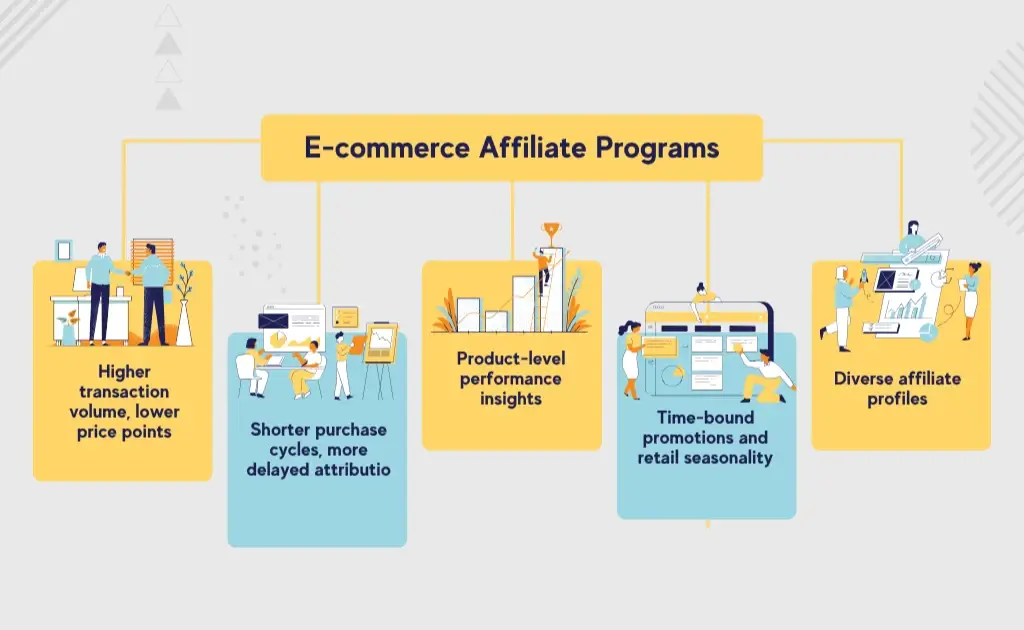
If your software isn’t built with these realities in mind, you’ll be stitching together workarounds instead of growing your program.
Use Affiliate Marketing Software to Automate the Repetitive Work
Affiliate marketing software isn’t magic. It won’t run your entire program for you, but it will take care of the repetitive, time-consuming parts that slow you down. It gives you the breathing room to focus on what drives growth: building relationships, educating and mentoring your affiliates, and running smart campaigns.
Here’s how software lightens your load:
Automate the busywork that slows you down
Clicks, conversions, and recurring payments are tracked automatically. No more manual reconciliation or spreadsheet chaos. This frees your team from routine admin work and reduces the chances of tracking errors, ensuring you don’t lose out on commission attribution or reporting.
Give affiliates self-serve tools to get started fast
Instead of email chains and manual setup, affiliates get a sign-up link and immediate access to their unique tracking links, branded assets, and performance dashboards. A streamlined experience makes onboarding faster and more professional, boosting confidence and motivation early on.
Streamline payouts and reduce errors
One of the biggest pain points in scaling an affiliate program is handling payouts. With software, once you define your payout rules—by product, tier, or behavior—everything else runs automatically. No more manual calculations or messy spreadsheets. Affiliates receive accurate and timely payments, and your team avoids monthly chaos.
According to a 2024 report by Influencer Marketing Hub, automating payouts and commissions reduces affiliate churn by up to 20%.
Focus your time on strategy, not operations
With the repetitive tasks off your plate, you can redirect time and energy into high-impact activities: segmenting affiliates by performance, launching campaigns for key retail moments, and supporting your top partners with tailored content and incentives.
You should also consider the specifics of your business model and audience, because every e-commerce store is different. As you evaluate tools, pay close attention to which features directly support your growth priorities, product types, and affiliate relationships.
Choose the Right Affiliate Marketing Software Features for E-commerce
The features you need will depend on your business model, audience, and the complexity of your program as it scales.
Here’s what may be needed for a smooth start and easy management:
Integrate with your e-commerce stack without dev time
Plug-and-play integrations with Shopify, WooCommerce, BigCommerce, and other platforms mean you can launch fast without needing a developer. Tapfiliate offers over 30 integrations with major e-commerce platforms, automation tools, and payment gateways, making setup quick and seamless.
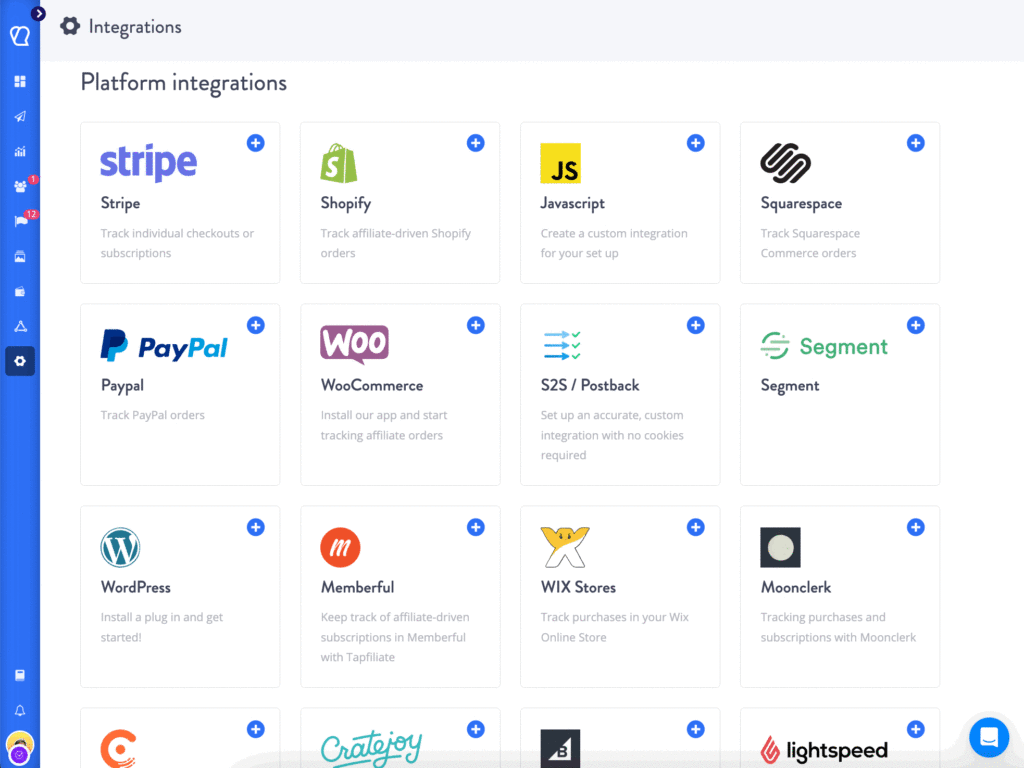
Track performance at the SKU and campaign level
Get detailed insights on which affiliates sell which products—so you can double down on what’s working. With Tapfiliate, you can segment by product or category, track performance by campaign, and see what’s driving results in real time.
Attribute sales with links or promo codes
Not all buyers click a link. Promo code attribution ensures influencers and partners get credit even if customers buy later or via a different channel. Tapfiliate supports both link- and code-based attribution, so you don’t lose out on conversions.
Customize affiliate dashboards and communication
Branded portals and white-label dashboards help affiliates stay informed and engaged. Tapfiliate also supports personalized messaging. Your partners see real-time data in a dashboard that matches your domain and brand, helping you build trust and professionalism.
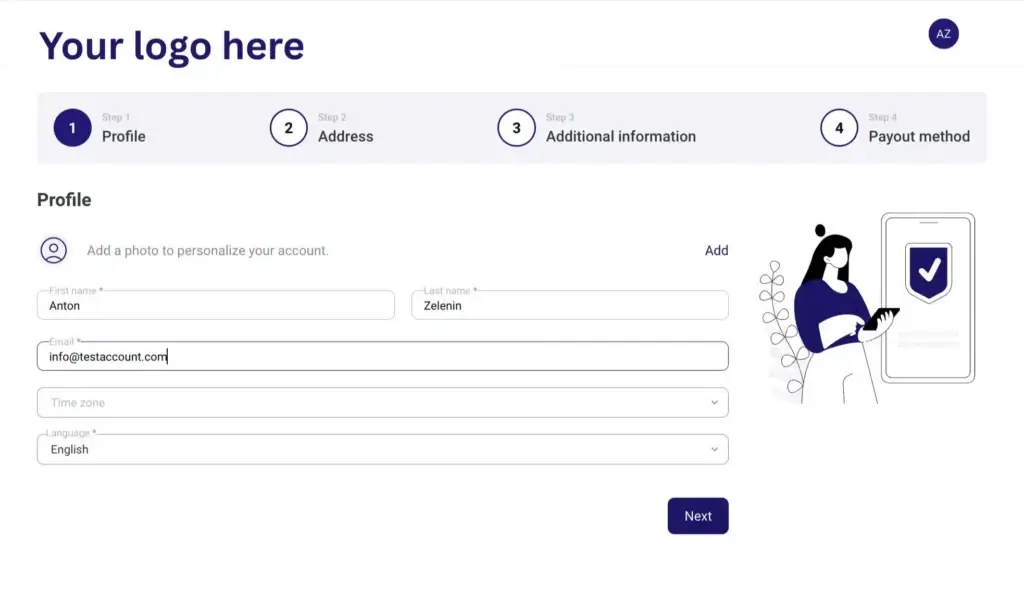
Set flexible, product-specific commission structures
Offer different rates based on product type, category, or performance tier. Add one-time or recurring rewards, or create campaign-based bonuses. Tapfiliate lets you create performance-based bonuses, group rewards, and SKU/category-based commissions to match your sales goals.

Stay compliant and fraud-free by default
Ensure your software complies with FTC guidelines, detects suspicious patterns, and safeguards your program as it scales. Tapfiliate includes built-in compliance features and fraud detection tools, so you can scale safely and confidently.
Recruit and Support Affiliates More Effectively
As your program grows, manual recruitment and onboarding quickly become bottlenecks. Affiliate software provides the structure and workflows to help you continue scaling without adding manual overhead.
Turn your customers into advocates
Your happiest customers are often your best ambassadors. With Tapfiliate’s Automatic Recruitment feature, you can invite customers to join your affiliate program right after they’ve made a purchase. This helps turn new buyers into affiliate prospects without extra manual outreach, and keeps your recruitment engine running automatically in the background.
Segment affiliates by role or performance
As your program scales, one-size-fits-all no longer works. Utilize affiliate software to categorize partners, such as content creators, ambassadors, or niche bloggers, and tailor communication and incentives to each group.
Streamline onboarding with centralized tools
Affiliates need fast access to what helps them sell more effectively. With Tapfiliate, you can provide tracking links, banners, discount codes, and swipe copy in one branded dashboard, reducing friction and improving time-to-first-sale.
Automate communication and engagement
Consistent communication is key to performance. Schedule regular updates, performance recaps, or milestone bonuses automatically, so your program stays personal without becoming chaotic.
With everything centralized, your team spends less time coordinating and more time strengthening affiliate relationships. Tapfiliate helps you move from managing a group to nurturing a community.
Track, Test, and Optimize Your Affiliate Program
Optimization turns a functioning program into a scalable growth engine. Affiliate marketing software gives you the tools to refine what works and fix what doesn’t continuously.
Monitor key affiliate KPIs to spot trends early
Let’s say you notice one affiliate has a lower AOV but high click volume. That could signal it’s time to offer bundled products or increase commissions on higher-margin items to raise profitability.
Why does this matter? Because different metrics reveal different performance dynamics. Here’s what you should pay attention to:
- EPC (earnings per click): Helps you measure affiliate efficiency. A high EPC suggests an affiliate knows how to convert clicks into revenue.
- AOV (average order value): Indicates not just whether affiliates are driving sales, but whether they’re driving high-value purchases.
- Conversion rate: Indicates how effectively your landing pages and offers are converting affiliate traffic.
- Customer lifetime value (CLV): Especially useful if you’re running upsells, loyalty programs, or subscriptions.
- Attribution mix (click vs. code): Helps you understand which channels and tactics your affiliates are relying on, and where attribution could be optimized.
Monitoring these KPIs regularly helps you adjust strategies, identify top performers, and fix underperforming areas early.
Run A/B tests on creatives, offers, and messaging
Use your affiliate software or external testing tools (such as VWO or Optimizely) to run experiments on banner creatives, product page formats, or even discount structures, like 15% off versus free shipping.
By the way, Tapfiliate allows you to rotate creatives and monitor which ones convert best easily. Over time, these tests help you spot patterns that boost revenue with minimal extra cost.
Automate performance triggers to reward or clean up
Tapfiliate supports smart automation using triggers — the conditions you define to initiate specific actions in your program. For example, you can:
- Boost commission tiers when an affiliate crosses a revenue threshold
- Automatically deactivate inactive affiliates
- Send bonus payouts when specific performance goals are hit
Triggers enable you to manage performance dynamically, eliminating the need for manual monitoring of every affiliate to keep your program sharp and responsive.
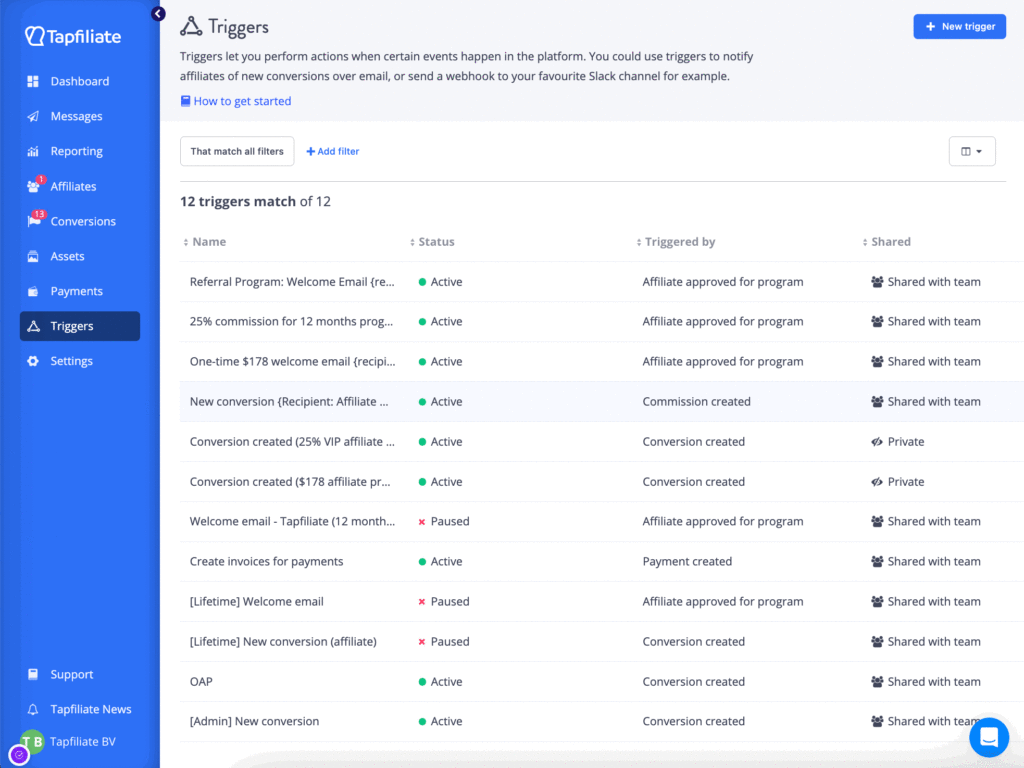
Use campaign-level data to guide strategic decisions
Campaign-level tracking lets you isolate performance data for specific promotions. For example:
- Measure which affiliates drove the most clicks and conversions during Black Friday
- Compare creative sets across seasonal campaigns (e.g., Spring Sale vs. Summer Drop)
- Track ROI by campaign type, like product launches vs. influencer pushes
Campaign data takes out the guesswork. When you can see which affiliate tactics, creatives, or audiences drove the best results, you can confidently reinvest in what performs and adjust what doesn’t.
E-commerce Brands Using Affiliate Marketing Software to Scale
Let’s look at what authentic e-commerce brands are doing to grow their affiliate programs:
MDHearing

As a Tapfiliate customer, MDHearing built a scalable, multi-tiered affiliate program that enabled them to work with a diverse range of partners, including review sites, content creators, and more. With automated tracking and streamlined onboarding, they efficiently expanded their reach while maintaining full control of the brand experience.
Get Answers to Common Affiliate Software Questions
Can I run seasonal affiliate campaigns?
Yes. Seasonal campaigns, such as Black Friday, product launches, or holiday-specific drops, can be managed with campaign-based tracking and time-limited assets. Many affiliate tools let you generate unique tracking links or creatives for each event so that you can isolate performance.
Can I track promo code redemptions?
Yes. If your software supports promo code attribution (Tapfiliate does), you can track conversions even when a buyer skips the referral link. This is especially useful for influencer marketing on social platforms.
Can I manage multiple storefronts?
Yes. Some affiliate software platforms allow you to manage multiple domains or brands from one dashboard. Tapfiliate supports this with a single login and unified analytics across your stores.
What does a good affiliate dashboard look like?
A strong dashboard should be on-brand, easy to navigate, and give affiliates real-time visibility into their clicks, conversions, and commissions. It should also let you send updates and assets easily.
Can I set recurring commissions for subscriptions?
Yes. If you sell subscription products (e.g., subscription boxes or SaaS), recurring commissions enable you to reward affiliates on a monthly or per-renewal basis. This helps incentivize long-term promotion, not just quick wins.
Do I need a big store to start?
No. Many successful programs begin with a small number of affiliates and expand over time. Software helps you grow without adding manual overhead, no matter your size.
What’s the average ROI for affiliate marketing in e-commerce?
While it varies, Shopify reports that affiliate programs return an average ROI of 12:1. Strong programs grow through incremental optimizations, data visibility, and consistent partner engagement.
Wrapping up: Take the Next Step with Affiliate Marketing Software
If you’ve made it this far, you already understand how much affiliate marketing can contribute to e-commerce growth. However, moving from a basic setup to a growth-ready, performance-driven program requires a well-elaborated infrastructure.
Manual systems break under pressure. Without automation and proper tracking, you’re stuck trying to scale with duct tape: endless spreadsheets, inconsistent attribution, delayed payouts, and disengaged affiliates. That’s where purpose-built software makes the difference.
Affiliate revenue doesn’t have to be unpredictable or difficult to manage. With the right system in place, it becomes a repeatable, scalable growth engine.
Want to turn affiliates into your highest-performing channel?
🚀 Try Tapfiliate free for 14 days!
No hassle, just results!



















